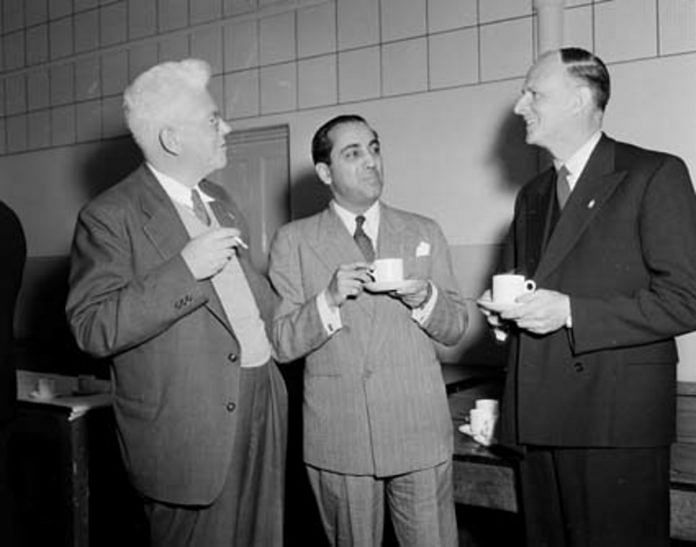Bhabha died in 1966 in an Air India crash 3 months after he said India could make an atom bomb in 18 months. Was it sabotage? Or just an accident?
New Delhi: On 24 January 1966, around 7:02 am, Air India flight 101 from Bombay to New York crashed into Mont Blanc in the Alps, killing all 117 passengers on board.
One of the passengers on the Boeing 707 named ‘Kanchenjunga’ was India’s foremost nuclear scientist, Homi Jehangir Bhabha. He was just 56.
The official reason given for the crash was miscommunication between the aircraft and Geneva airport. However, the disaster remains mired in conspiracies.
Who was Homi J. Bhabha?
Homi Bhabha pioneered India’s nuclear energy programmes and was a well-known nuclear physicist. He studied in Cambridge, where he was internationally recognised for his work with cosmic rays. Bhabha was working in the famed Cavendish Library where many discoveries of the time were taking place.
He was vacationing in India when World War-II started, and he decided to stay back. Bhabha joined Nobel Laureate C.V. Raman’s laboratory, Indian Institute of Science and went on to become the founder-director of the Tata Institute of Fundamental Research in Bombay.
Bhabha had believed that for India to emerge as a power to reckon with, it had to develop its nuclear capabilities, as well as an atom bomb if it needed to defend itself. He had convinced his close friend Jawaharlal Nehru of the same – that science was the way to progress. Bhabha eventually became the chairman of the Indian Atomic Energy Commission.
In a 1965 interview to All India Radio, Bhabha had said if he had the green signal, India could make a nuclear bomb in 18 months. The fateful plane crash took place three months later.
Remains at the crash site
In 1950, another Air India aircraft, the ‘Malabar Princess’, had also crashed into Mont Blanc and all 48 on board were killed.
In 2017, Daniel Roche, a Swiss climber, found remains of an aircraft in the Alps, which could be from either of the two Air India crashes. Roche, an aviation enthusiast, had found a few limbs, as well as a jet engine at the site. He believes that Air India Flight 101 was intercepted by another plane and crashed.
Roche had said, “If Kanchenjunga had crashed in the mountain, there should have been a huge fire and explosion as there was 41,000 tonnes of fuel in the aircraft, but that was not the case. According to me, it collided with an Italian aircraft and as there is very little oxygen at that height, there was no combustion that could cause an explosion.”
On Homi Bhabha, Roche added, “I do not know whether it was a conspiracy or what as Bhabha was going to give India its first nuclear bomb…I feel that it is my duty to tell the truth to the world based on the evidence. If the Indian government wants, I am ready to hand over the documents and the belongings of the passengers to them.”
The final French inquiry report, however, had concluded based on the wreckage, that the crash was the result of a miscalculation, rather than another plane intercepting it. “The commission concluded that the most likely hypothesis was the following: a) The pilot-in-command…miscalculated his position in relation to Mont Blanc. b) The pilot who, under the mistaken impression that he had passed the ridge leading to the summit, was still at a flight level which afforded sufficient safety clearance over the top of Mont Blanc, continued his descent.”
One of the receivers on the plane was not working, and the pilot miscalculated the verbal data sent to him on the plane’s position.
Was the CIA involved?
In 2008, an alleged conversation between CIA officer Robert Crowley and journalist Gregory Douglas was published in the book Conversations with the Crow which led people to believe that the American intelligence agency had a hand in the Air India crash and Homi Bhabha’s demise.
The theory was that America was perturbed by countries such as India gaining nuclear capabilities, or making atomic bombs and weapons. In 1945, America was the sole possessor of the technology, by 1964 both the Soviet Union and China had tested atomic bombs. The CIA official was quoted as saying, “We had trouble, you know, with India back in the 60’s when they got uppity and started work on an atomic bomb.”
After the Sino-Indian war, India started pushing more aggressively for nuclear weaponry. The then Prime Minister, Lal Bahadur Shastri, accepted Bhabha’s ideas to push for nuclear weapons. Shastri also died, some believe under mysterious circumstances, in 1966, one day after signing the Tashkent agreement.
Referring to Homi Bhabha, the CIA official said, “That one was dangerous, believe me. He had an unfortunate accident. He was flying to Vienna to stir up more trouble when his Boeing 707 had a bomb go off in the cargo hold.”
Letters, diplomatic documents, cameras, and jewellery continue to be found at the wreckage site at Mont Blanc. While conspiracy theories still abound about Homi J. Bhabha’s death, India on this day lost one of its finest nuclear scientists at the prime of his career. The Trombay Atomic Energy Establishment was renamed as Bhabha Atomic Research Centre in his honour by Indira Gandhi.



